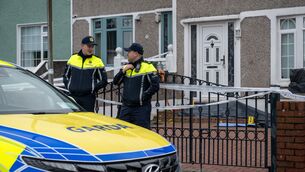Less than 60% of stroke victims get to hospital in time for critical treatment

Professor Rónán Collins, the HSE’s National Clinical Lead for Stroke, insists that the faster stroke sufferers seek help and can present to an emergency department, the better the outcome.
Only 58% of stroke patients got to hospital for specialised clot-busting treatment in 4.5 hours or less during 2021, a national stroke audit has found.
It is a drop from 60% the previous year.
The audit also recommended the number of stroke beds is increased so that at least 90% of these patients are cared for in a dedicated unit.
The average stroke destroys around two million brain cells every minute, with 1,423 deaths in Ireland during 2021 and over 6,000 people hospitalised.
HSE National Clinical Lead for Stroke Professor Rónán Collins said: “We need to encourage people to learn about the signs of stroke and to act as fast as possible in calling an ambulance as the faster the presentation to ED, the better the outcomes from acute treatment.”
Speaking at the launch of a new Irish Heart Foundation ‘Act FAST — Minutes Matter’ campaign, he warned: “Delays in presentation undo much of the progress we have made with stroke treatments and improving outcomes and can result in extra disability or even death.”
The Irish National Audit of Stroke for 2013 to 2021 found while stroke beds have increased from 150 (in 2015) to 239 now, this is not keeping pace with demand.
“The number of stroke unit beds should be increased so that at least 90% of patients with a stroke are cared for in a stroke unit,” the audit found.
In 2021, some 70% of these patients were admitted to a stroke unit.
After a stroke, occupational therapists reported only 38% of patients received sufficient therapy and only 46% received sufficient Speech and Language therapy.
Physiotherapists also reported only 51% of these patients received sufficient therapy, according to audit data from the Health and Social care Professional dataset (2021).
However, one in ten patients leaving hospital after stroke treatment now have access to Early Supported Discharge, an increase since 2017 from 2% to 10%. The audit recommended setting up more discharge teams to support patients.
IHF chair Professor Emer Shelley welcomed the changes, saying in 2007 there was just one stroke unit for the whole country.









